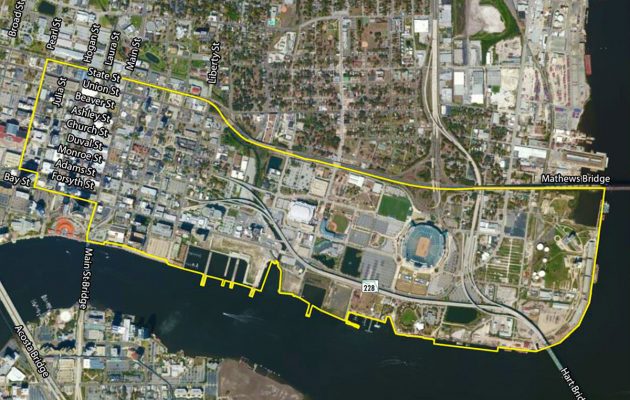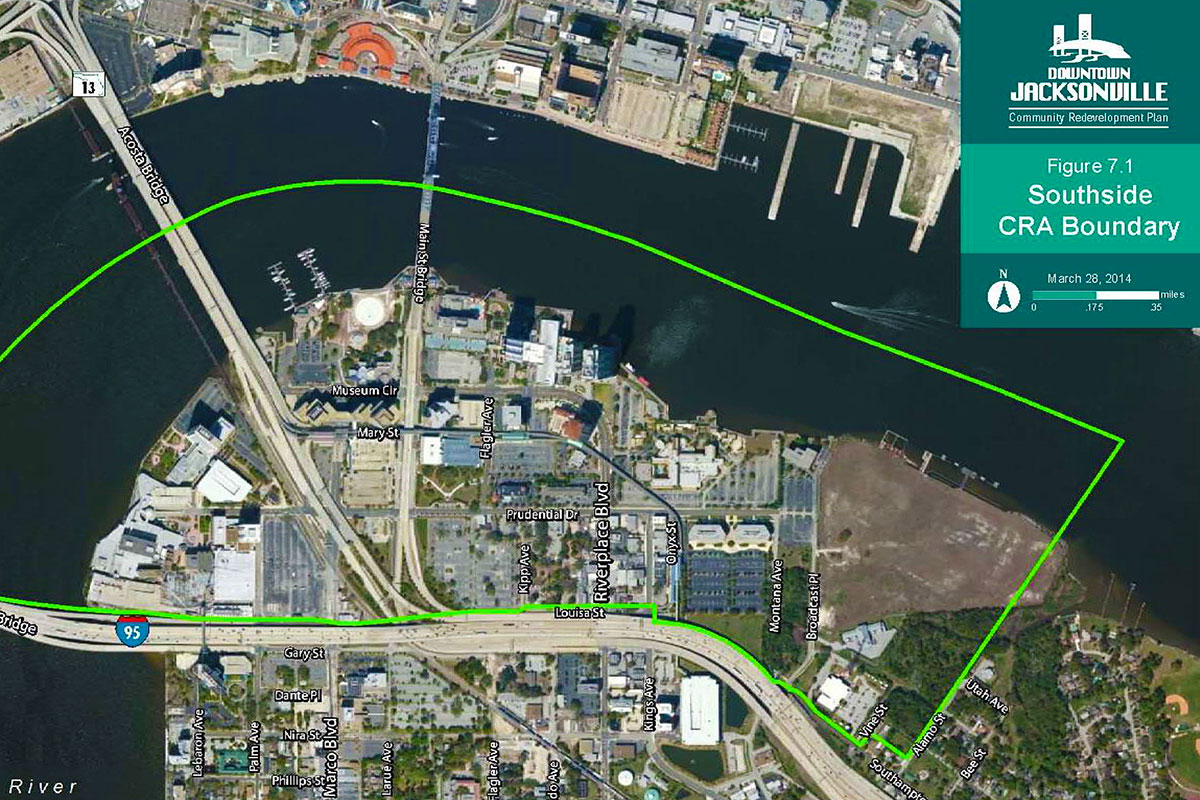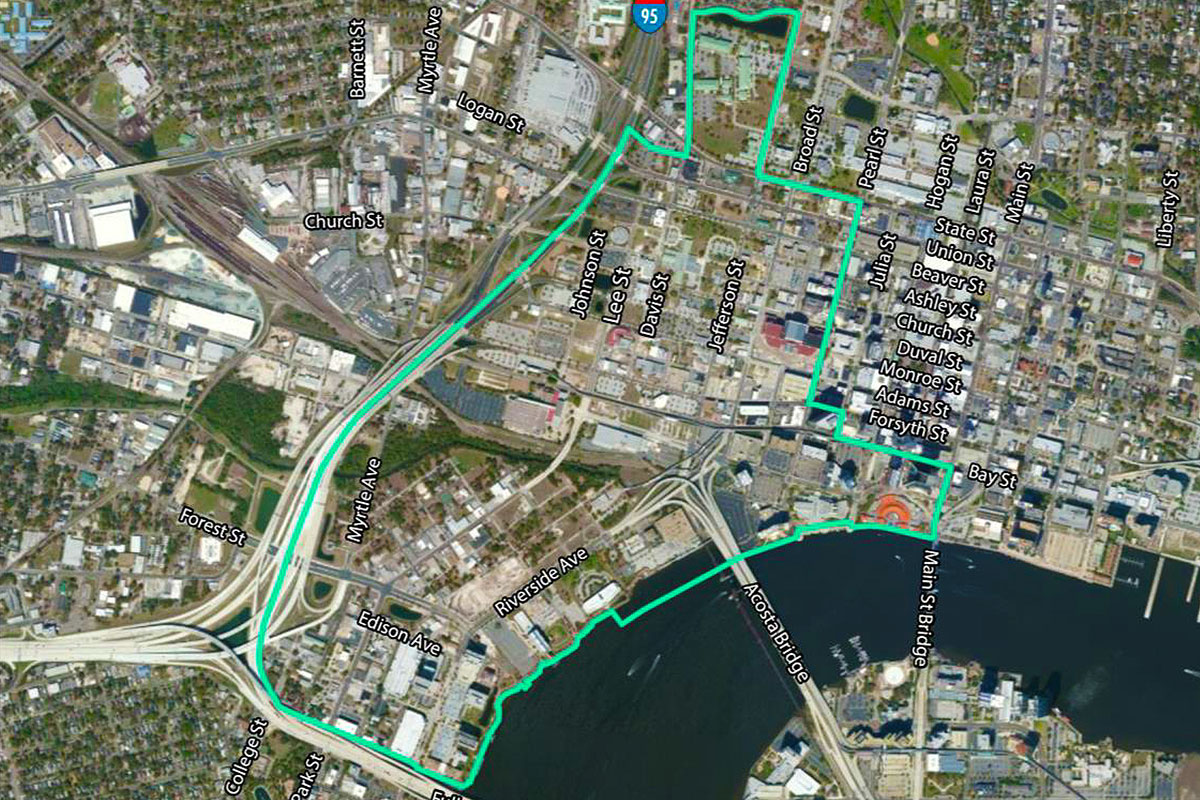Downtown at ‘a point of change’ for commercial investments
Posted on October 1, 2018 By Editor Articles, Neighborhood News, Top Stories

Oliver Barakat, 48, has been a commercial real estate broker in Jacksonville since the late ‘90s. He specializes in office properties. He helps tenants find the right space and advises them through the entire process from planning and strategy, to negotiating the lease, to the purchase of a building. And he has noticed something new going on Downtown.
Tenants are willing to pay a ton of money to be in the refurbished historic buildings. And he didn’t see that a decade ago.
Barakat, who is a senior vice president with CBRE Group, Inc., and a board member and past chair of the Downtown Investment Authority, the economic development agency focused on revitalizing Downtown, has his finger on the pulse.
“We’re kind of at this point of change,” Barakat said. “There’s historically been a negative perception about investing private capital in the downtown market. Now folks are more even keel. They are still cautious, but they are not negative about it.”
While optimism is too strong a word for Barakat, he said investors need to think twice before not considering Downtown as an investment option “where before it was an easy ‘no thanks.’”
The momentum Downtown can be linked, in part, to the efforts of the Downtown Investment Authority (DIA) and its CEO Aundra Wallace, a shift in demographics and the demand for historic buildings, he said.
“I think the community finally recognized that we have to have an organization that wakes up every day and focuses on downtown development,” he said. “We didn’t have that for many years.”
The millennials are now a major demographic and they do not want to live in suburban sprawl. They want an urban experience, he said. And that has manifested itself in Riverside and Springfield’s renaissance. “But, it is also happening in Down-town in smaller pieces.”
Barakat said the third factor is a greater appreciation of historic buildings. Historic-ally, this only happened in very large markets, like a Chicago or New York.
“Now you can go to almost any city and you will see there is historic restoration occurring in those buildings,” he said. “I think that has really helped Downtown because those old buildings lying fallow for so long were really a drag on Downtown, and now they are a major attraction because they are so unique and have so much character that you cannot replicate anywhere else.”
But this is not the first time Downtown has approached an inflection point. Barakat said the last time Jacksonville got close the recession happened. So, a sense of urgency is important to continue the velocity of investment by the public sector, as well as from the private sector side to maintain the momentum.
“The true goal for us is to ensure that any revitalization overcomes or transcends any recession,” he said. “We have to have a revitalization that is sustainable, so that when we come out of the next recession we are not starting all over again.”
And for that to happen Barakat said, “We need more projects. We need more density. We need more critical mass to get us through that.”
Critical mass refers to people. It can be measured in different ways – residential units, amount of construction and the like, but at the end of the day the revitalization of Downtown requires a number of people living there who call it home.
There are roughly 4,000 residential units that are either under construction or existing Downtown. And, he said it will take about 10,000 units to create enough density for retail to be self-sufficient “to get us close to an 18-hour activity level on the street, and get us to a point where there is so much residential activity you have natural demand for retail, and you have office occupiers naturally attracted to the environment because it is a cool place to be.”
When a point of natural growth is reached, fewer projects need city and public incentives. Although, he said he thinks “we’ll always rely on maybe some level of incentives Downtown for certain projects, but right now almost every project needs some level of incentive.”
Incentives for redevelopment of Down-town Jacksonville – an area that includes the Downtown Northbank and Southside Community Redevelopment Areas – are in the domain of the DIA.
In August, at a commercial real estate conference by Bisnow, Wallace said his goal when he took the helm of the DIA was to build an infrastructure that made it easier for private developers and the city to talk to one another and to move projects forward. He said, “If you cannot show the ability to have a private public partnership no particular downtown in any particular city is going to get developed.”
Since that time, Wallace said the DIA has moved expeditiously on board approvals for a number of projects. It took about a month for the board to approve the redevelopment of the Barnett Bank building after reaching agreement with the developer and about the same amount of time to approve the financial partnership that brought Jacksonville University downtown.
Housing mix needs to be right
During the Bisnow meeting, Jacksonville Mayor Lenny Curry said the attractive regulatory environment for investors, combined with jobs and population growth, brought $3.5 billion in downtown investment in 2017. “That’s a billion more than the last 17 years combined,” he said.
With that type of investment and bold plans for redevelopment Downtown, the right mix of housing is an important piece to the puzzle.
“In certain instances, a downtown can just catch fire,” Barakat said. And if it does, rents can rise very quickly, and it can create a housing affordability problem for young professionals, teachers and community workers. “So, we’ve tried to ensure, before things take off too fast, that we develop lower income and affordable housing.”
The LaVilla District west of The Landing on the Northbank is home to three such developments. Combined, they will create about 400 units of affordable and workforce housing for low- and moderate-income households, he said.
According to the Downtown Jacksonville Community Redevelopment Plan, workforce housing, which is defined as housing that is affordable to a person who earns less than 150 percent of the current area median income, is considered investment in infrastructure as fundamental as utility lines and transit. And, the DIA is charged with promoting its development Downtown.
“We haven’t built that kind of housing Downtown in many years,” Barakat said. Whereas, there has been investment in waterfront housing with developments such as the Berkman Plaza One on the Northbank and the Peninsula and the Strand on the Southbank. There have also been market rate housing developments in the Brooklyn neighborhood and South-bank next to the school board.
“If you’re gonna have a healthy residential density downtown you can’t just have residential for affluent people, and you don’t want to have just low-income housing either,” Barakat said. “You want to have a neighborhood with a variety of residences.”
In terms of keeping the momentum strong for a vibrant revitalization Down-town, there is still work to be done.
There are a lot of vacant properties that are privately owned. “In the national historic district in the core of Downtown, we’ve got 187 contributing properties,” Barakat said. As to how many are vacant, he is not certain but said it is probably as much as one-third of them.
“We are directing many of our incentives toward those kinds of properties because if they are revitalized they are huge assets, if they are lie fallow they are a major detriment to development,” he said.
Barakat said it is also probably time to spend some money on public infrastructure Downtown, such as converting more one-way streets to two-way streets, improving wayfinding signage and lighting. He said the public realm is average and improvement adds a sense of place and helps developers come to the table.
“If you want to live Downtown, at the end of the day you want to see the neighborhood continue to improve and private developers can only do so much.”
By Kelly Kelly
Resident Community News




 (No Ratings Yet)
(No Ratings Yet)






